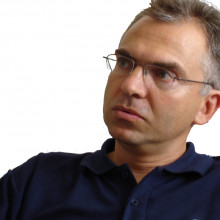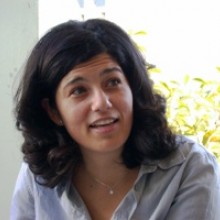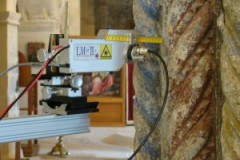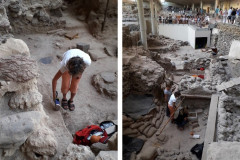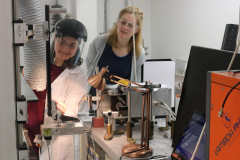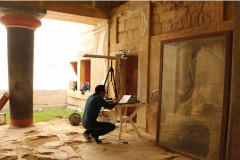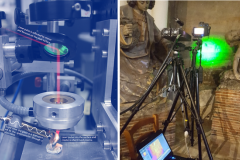E-RIHS mission is to deliver integrated access to expertise, data and technologies through a standardized approach, and to integrate world-leading European facilities into an organisation with a clear identity and a strong cohesive role within the global heritage science community.
New instruments, new protocols and new techniques have a decisive impact on heritage science research, enabling improved understanding of heritage objects and sites. E-RIHS ERIC stimulates innovation in large-scale and medium-scale instrumentation, portable technologies and data science.
Through interdisciplinary access to the four platforms (E-RIHS ARCHLAB, E-RIHS DIGILAB, E-RIHS FIXLAB, E-RIHS MOLAB), E-RIHS ERIC supports a wide variety of research, from smaller object-focussed case studies, to large-scale and longer-term collaborative projects. Proposals for access are handled through a common entry point, their evaluation is based on excellence, following assessment by independent international peer review panels.
E-RIHS ERIC promotes good practices and develops or advances methods designed to respond to the specific needs of cultural heritage assets, whether material or digital: objects, collections, buildings and sites.
Vision
Fragmentation, duplication of efforts, isolation of small research groups put at risk the competitive advantage of European heritage science research, spearheaded so well in the past by its unique cultural heritage. The long‐term tradition of this field of research, the ability to combine science with innovation, and the support provided by EU‐funded projects and integrating activities such as EU‐ARTECH, CHARISMA and IPERION CH in conservation science, and ARIADNE in archaeology, represent the background of E-RIHS. E-RIHS exploits the synergy of the cooperation among the academy, research centres, museums and cultural institutions. Both the scientific and the socio‐economic importance connected with heritage science are nowadays evident. The research community has achieved the maturity necessary to make the leap towards a permanent European research infrastructure that will impact broadly on society and economy.
Objectives
E-RIHS is a distributed research infrastructure in the field of Heritage Science
What does it means? A distributed research infrastructure is an organization that enables the research community to use specific facilities, resources and services that are geographically scattered. E-RIHS gives access to facilities, resources and service in the field of Heritage Science across Europe.
E-RIHS will provide access to a wide range of cutting-edge scientific infrastructure, methodologies, data and tools, training in the use of these tools, public engagement, access to repositories for standardized data storage, analysis and interpretation. E-RIHS will enable the community to advance heritage science and global access to the distributed infrastructures in a coordinated and streamlined way.
E-RIHS will provide access services through four integrated platforms:
-
 E-RIHS ARCHLAB (archives) Access to specialised knowledge and organized scientific information – including technical images, analytical data and conservation documentation – in datasets largely unpublished from archives of prestigious European museums, galleries and research institutions.
E-RIHS ARCHLAB (archives) Access to specialised knowledge and organized scientific information – including technical images, analytical data and conservation documentation – in datasets largely unpublished from archives of prestigious European museums, galleries and research institutions.
-
 E-RIHS DIGILAB (virtual facilities) Virtual access to scientific data concerning tangible heritage, making them FAIR (Findable-Accessible-Interoperable-Reusable). It includes searchable registries of multidimensional images, analytical data and documentation from large academic as well as research and heritage institutions.
E-RIHS DIGILAB (virtual facilities) Virtual access to scientific data concerning tangible heritage, making them FAIR (Findable-Accessible-Interoperable-Reusable). It includes searchable registries of multidimensional images, analytical data and documentation from large academic as well as research and heritage institutions.
-
E-RIHS FIXLAB (fixed facilities) Access to large‐scale and medium-scale facilities (particle accelerators and synchrotrons, neutron sources; non-transportable analytical instruments) offering a unique expertise to users in the heritage field, for sophisticated scientific investigations on samples or whole objects, revealing their microstructure and chemical composition, giving essential and invaluable insights into historical technologies, materials, alteration and degradation phenomena or authenticity.
-
 E-RIHS MOLAB (mobile facilities) Access to an impressive array of advanced mobile analytical instrumentation for non‐ invasive measurements on valuable or immovable objects, archaeological sites and historical monuments. The MObile LABoratory allows its users to implement complex multi‐technique diagnostic projects, permitting the most effective in situ investigations.
E-RIHS MOLAB (mobile facilities) Access to an impressive array of advanced mobile analytical instrumentation for non‐ invasive measurements on valuable or immovable objects, archaeological sites and historical monuments. The MObile LABoratory allows its users to implement complex multi‐technique diagnostic projects, permitting the most effective in situ investigations.
If you are interested in ongoing access calls, browse the IPERION HS catalogue of services:
http://www.iperionhs.eu/catalogue-of-services/
If you are interested in ongoing access calls,browse the IPERION HS catalogue of services:
http://www.iperionhs.eu/catalogue-of-services/
for more info on how to access browse : https://www.iperionhs.eu/iperion-hsaccess/
E-RIHS national hubs
National hubs operate at national level in diverse legal frameworks and represent national associations of partner facilities.
Currently, the national hubs sharing the objectives of E-RIHS are active in Belgium, Cyprus, Denmark, France, Germany, Greece, Hungary, Italy, Malta, The Netherlands, Poland, Portugal, Romania, Spain, Slovenia, Sweden and United Kingdom.
At the moment, 24 national nodes including partners beyond Europe are participating in the H2020 project IPERION HS (Integrating Platform for the European Research Infrastructure on Heritage Science), funded by the European Commission under G.A. 871034.
Funding frameworks history
-
E-RIHS IP - European Research Infrastructure for Heritage Science (Implementation Phase)- HORIZON-INFRA-2021-DEV-02, GA in preparation, (2022-2024)
-
IPERION-HS, Integrating Platforms for the European Research Infrastructure ON Heritage Science, H2020-INFRAIA-2019-1, under GA No. 871034, https://cordis.europa.eu/project/id/871034 , https://www.iperionhs.eu/
-
E-RIHS PP - European Research Infrastructure for Heritage Science (Preparation Phase)- H2020-INFRADEV-2016-2 - Preparatory Phase and support to early phase of ESFRI projects , GA 739503 (2017-2020), https://cordis.europa.eu/project/id/739503 http://www.e-rihs.eu/
-
IPERION CH - Integrated Platform for the European Research Infrastructure ON Culture Heritage, H2020-INFRAIA-2014-2015, Integrating and opening existing national and regional research infrastructures of European interest , https://cordis.europa.eu/project/id/654028, GA 654028 (2015-2019)
-
CHARISMA - Cultural Heritage Advanced Research Infrastructures: Synergy for a Multidisciplinary Approach to Conservation/Restoration, FP7-INFRASTRUCTURES - Specific Programme "Capacities": Research infrastructures , https://cordis.europa.eu/project/id/228330 , GA FP7 228330 (2009-2014)
-
EU-ARTECH - Access Research and Technology for the conservation of the European Cultural Heritage, FP6-INFRASTRUCTURES - Research infrastructures: Specific programme for research, technological development and demonstration: "Structuring the European Research Area" FP6-RII3-CT-2004-506171, https://cordis.europa.eu/project/id/506171 , GA 506171 (2004-2009)
-
LabSTECH, Laboratories on Science and Technology for the conservation of European Cultural Heritage, FP5-HPRI-CT-2000-40018, https://cordis.europa.eu/article/id/96087 GA 96087 (2001-2003)



